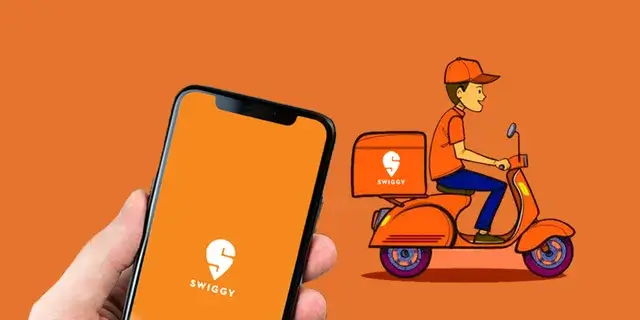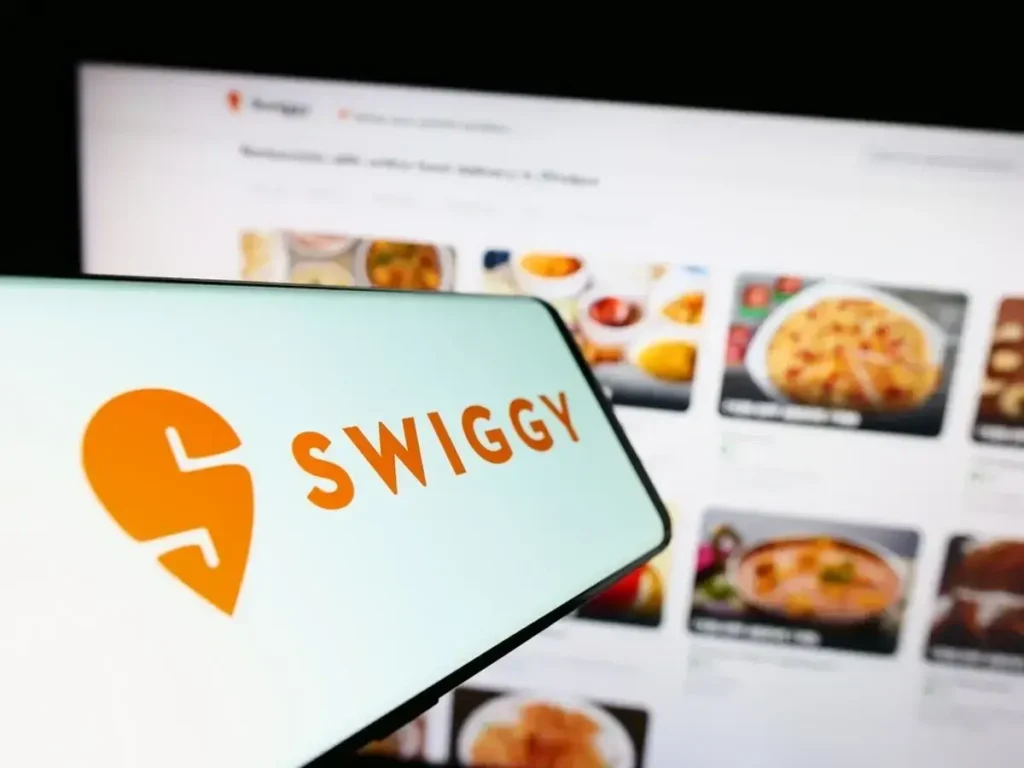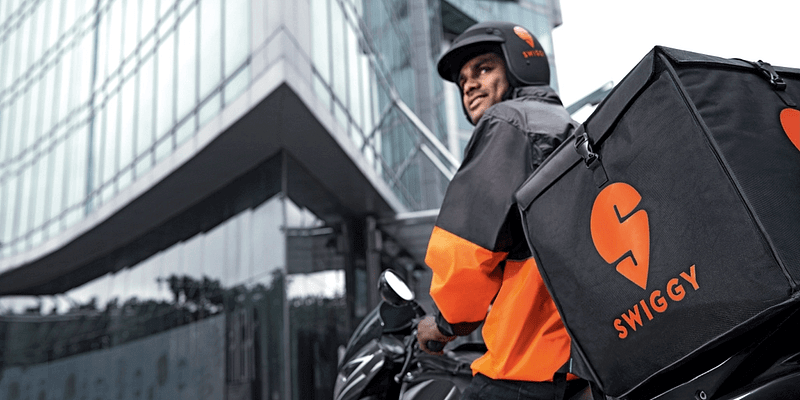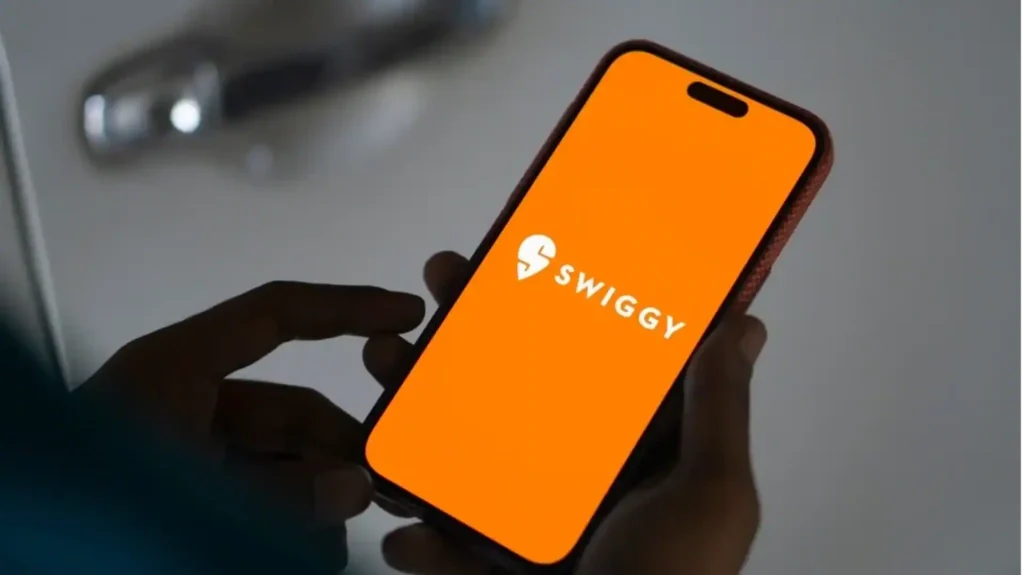The immensely popular food ordering and delivery platform Swiggy is running into huge losses—losses for FY24 were Rs. 2,350 crore and its loan liabilities are in the range of Rs. 2,000-3000 crore. Obviously, in spite of being in its 11th year, it is a failed business model. A ruthless analysis.

Given the hectic lifestyle most of the urban working people have, a huge number of them find it too boring or tiring to cook meals at home or dine out regularly. Food delivery services like Swiggy offer a very convenient solution by bringing a variety of food items right to your doorstep. While an exact delivery count isn’t available, it is estimated that in 2024, Swiggy touched some 83 million biryani orders, which translates to 158 orders per minute. The company also mentioned the popularity of dosa, with 23 million orders in the same year. Swiggy’s reports also highlight other trends like the popularity of dinner orders, with a total of 215 million orders in 2024, which is nearly 29% higher than lunch orders. Its popularity be damned, I decided to write this article because there is something most of you consumers would probably not know.
Swiggy’s losses went up to Rs. 799 crore in the October-December 2024 quarter, which is 40% higher than Rs 574.4 crore in the corresponding period the previous financial year. Its FY24 loss of Rs. 2,350 crore places it among India’s biggest loss-making companies. Their revenue has grown, but expenses have outpaced it, leading to widening losses.
Obviously, something is fundamentally and seriously wrong with the business model for a company that is now in the 11th year of its operation, that is no longer a rookie start-up—your operational costs are more than what you earn; as simple as that. No further arguments.

There is only one measure of success in business—whether you earn profits or not. For God’s sake cut the crap of the number of people dependent on the business for their livelihood; the number of customers served by the business, its geographical spread, or its popularity. Leave that bullshit for governments swearing to lie by socialistic crap. A private business that runs primarily on bank loans has moral and legal responsibilities to repay the loans. If its losses mount so much and its profitability so low that it is not in a position to pay them back, means that the liabilities would eventually be transferred to the people of the society at large. The banks cannot pay from their pocket; their money is public money. If they write off the loans, it is criminal and a betrayal of the trust the people have placed in the system. You can check historical data, almost for all cases of debtors defaulting on loan payment; the banks have been able to recover only a fraction of the loan from liquidation of their assets. Eventually, who meets the shortfall? The people or the society as a whole, in the form of increased taxes or reduction in the public services they deserved by virtue of their taxes.
Incidentally, according to NBFC borrowings and historical debt in food delivery (e.g., Zomato’s pre-IPO debt), Swiggy’s loan liabilities are estimated at Rs. 2,000-3,000 crore. Swiggy relies on equity funding (e.g., IPO proceeds) but likely has bank loans for working capital.

Swiggy was conceived by Sriharsha Majety and Nandan Reddy who developed the idea of “hyperlocal food delivery”. These two BITS Pilani graduates met while working on a previous venture, Bundl Technologies. Rahul Jaimini joined the team and was responsible for the technical aspects of Swiggy, including the design and development of the website and mobile applications. He was also the one who worked on the software behind the app. Having started as a start-up in 2014, it has since grown into a major player in the Indian food delivery market and even diversified into quick commerce with Swiggy Instamart, it started as a small venture.
While most readers would be familiar with what Swiggy does, I would still give a brief recap of what happens at the backend. Swiggy is an online food ordering and delivery platform that connects customers with a vast network of restaurants, offering a seamless experience from placing an order to receiving it at their doorstep. The platform uses technology to optimize order processing, routing delivery partners, and tracking order progress. Customers can use the Swiggy app or website to browse restaurants and menus near their location. They can select their desired items, customize them, and add any special instructions. Once the order is placed, the restaurant receives it and starts preparing the food. Swiggy assigns a delivery partner to pick up the order from the restaurant. The delivery partner picks up the food and uses the Swiggy app to navigate to the customer’s location. Customers can track their order’s progress and the delivery partner’s location in real-time through the app. The delivery partner delivers the food to the customer’s doorstep, offering contactless delivery if preferred. Swiggy also offers other services like quick commerce through Swiggy Instamart and same-day package deliveries with Swiggy Genie.

The Swiggy story is a classic example of two things. First, attractive, catchy or popular business ideas do not necessarily translate into successful business ideas. Second, merely because a business grows so much in volume that it could be called Big Business, does not mean that it is necessarily a profitable business. Just recall Kingfisher airlines and its oh-so-smartly-dressed airhostesses (as against the matronly airhostesses of other airlines) and you will understand what a glorious failure means.
It is not difficult to understand why the idea of Swiggy cracked. No doubt, the idea was bound to be extremely popular because it was so attractive and catchy in the first place. It made life so convenient for millions upon millions. Get food of choice of your restaurants delivered at your home within minutes even as you, sprawled on your sofa, are happily watching IPL matches and do not want to lose a minute of the stupid fun. Plus, you are saved the trouble of booking seats at the restaurant, taking out your car or bike, driving to the restaurant amidst heavy evening traffic, struggle for finding proper parking in the market, wait for seats (which might not offer a view of the TV, if at all there), wait for your order to be served, eat and then drive back home all tired and sweaty.
But, the attractive idea also made you addicted to it. You, of course, could not be bothered about how they were doing it. In the end, it was your addiction that made them balloon in size to take them to the ranks of Big Business, while also, unbeknownst to you, growing their losses and loan liabilities. When, in the end, they fail to repay the loans, the society as a whole would be bearing the cost of its dependence or addiction to a convenience.

In case you do not have an idea of their overhead costs, let me illuminate you:
Delivery costs are typically 30-35% of the total expenses.
Delivery Partner Pay: Delivery partners earn Rs. 30–50 per order (Swiggy’s own fleet costs ~Rs. 55/order, while third-party services like Rapido charge ~46/order). For a Rs.100 order, this is 30–50% of the order value, making low-value orders (<Rs.200) particularly unprofitable.
Petrol Costs: Motorbikes (e.g., Honda Activa) average 40–50 km/litre, and a 5 km round-trip delivery consumes ~0.1–0.125 litres. At Rs. 100/litre (current petrol price in India), fuel costs ~Rs. 10–12.5 per delivery. For a Rs.50 order, fuel alone is 20–25% of the order value.
Vehicle Maintenance: Motorbikes require periodic servicing (~Rs. 1,000 every 3–6 months), adding minor costs per delivery.
Technology and platform costs are typically 10–15% of the total expenses.
App Development and Maintenance: Swiggy invests in AI, machine learning, and real-time tracking, costing crores annually for server upkeep, updates, and cybersecurity.
Route Optimization Algorithms: AI systems (e.g., combinatorial reinforcement learning for order batching) reduce delivery times but require significant R&D and cloud computing costs.
Marketing and Customer Acquisition: Swiggy allocates Rs.929.5 crore for marketing (per its IPO filing), including discounts, ads, and loyalty programs to retain customers.
Corporate overheads are typically 5–10% of the total expenses.
Admin and Legal: Compliance with GST, data protection laws, and labour regulations adds legal and accounting costs.
Management and R&D: Salaries for executives, data scientists, and engineers contribute to overhead.
Sustainability Initiatives: Investments in electric vehicles, biodegradable packaging, and carbon-neutral goals add marginal costs (e.g., Swiggy’s partnership with Gogoro for smart scooters).
Other costs are typically 5-10% of the total expenses. They include:
Packaging: Eco-friendly bags cost Rs. 2–5 per order.
Customer Support: Handling returns, refunds, and complaints requires call centres and staff.
Insurance: Liability and vehicle insurance for delivery partners adds minor per-order costs.
Just for illustration, for a Rs.100 order, delivery costs (Rs. 30–50), fuel (Rs. 10–12.5), and packaging (Rs. 2–5) total ~Rs. 42–67.5, leaving little to no margin after product cost (~Rs. 50–70, assuming a 20–30% margin).

Swiggy tries to mitigate this through:
Delivery Fees: Rs. 10–30 per order, often dynamic based on distance or demand. Dynamic delivery fees means Swiggy charges higher fees during peak hours, rain, or long distances, in an effort to offset fuel costs spent over idling, detours and multiple stops.
Minimum Order Values: Encouraging baskets above Rs. 150–200 via discounts or free delivery thresholds.
Subscription Models: Programs like Swiggy One offer free deliveries for a monthly fee, boosting order frequency.
It does not require a PhD in microeconomics to understand that small or low-value orders often cost more to deliver than the item’s price, and geographical dispersion complicates efficiency—the so-called last mile delivery. The sheer number of orders cannot make up for the fundamental loophole.
Swiggy uses combinatorial reinforcement learning to assign multiple orders (2–4) to a single delivery partner based on proximity, delivery windows, and traffic. Still, in low-density areas or during off-peak hours, batching is less feasible, and single-order deliveries dominate, raising costs. Urban congestion also limits efficiency, as motorbikes can’t always bypass traffic. Further, you cannot ignore the environmental impact. Frequent motorbike trips and packaging contribute to emissions and waste.

The quick commerce market is fiercely competitive, with players offering steep discounts to capture market share. Swiggy’s marketing spend, though reduced from Rs. 2,501 crore in FY23 to Rs. 1,851 crore in FY24, remains a significant burden.
The Rs. 158 crore tax notice and other compliance costs (e.g., GST, labour laws) add financial strain. High attrition rates (53.74% in FY24) among delivery and call centre staff further increase recruitment and training costs, disrupting service quality.
In the end, while Q-commerce (Blinkit, Swiggy) is hyped as India’s next growth engine, with venture capitalists and private equity firms supposedly betting on future profitability, given the high cash burn and low margins, a cold, unbiased analysis does not inspire confidence.


[…] No matter what kind of business you run, you will deal with all sorts of clientele. Even those who only serve the most rich, wealthy and exclusive will speak to people from all over the world, with all kinds of tastes and preferences. For that reason, operating within the part of the market section you’ve deemed most appropriate, while also keeping your arms wide to other business, is a generally good idea for keeping the customers rolling through. […]